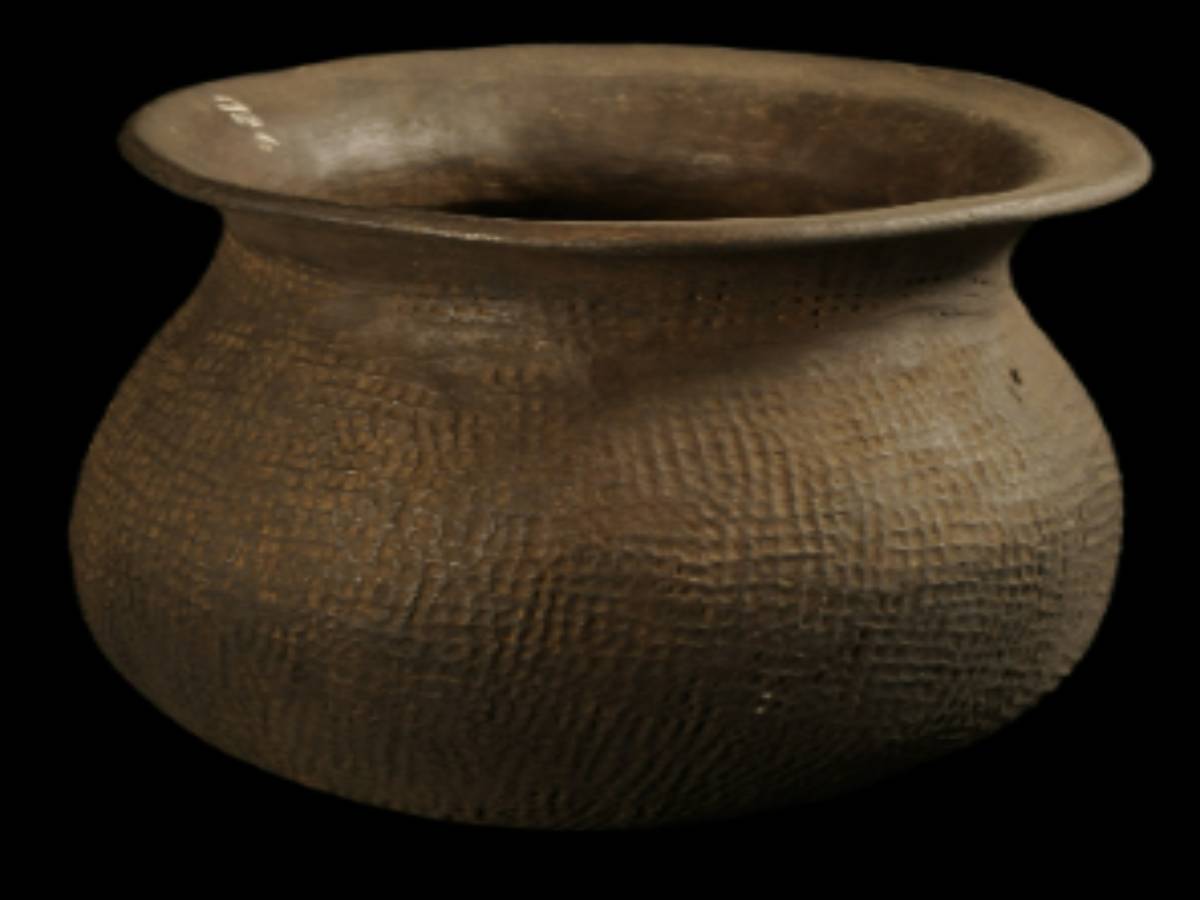State
Tribe Name
Art Type
short description
This handmade mud cooking pot is a traditional pot of Khampti tribe which is one of the ethnic groups mainly found in Assam, particularly in Dibrugarh and Tinsukia districts. People from Khampti live with the culture of Tai and Buddhism, and traditionally, they were people who made useful and decorative items out of natural materials. Pottery is one of their important traditional works. The pot is made in such a way that it has a spherical body and a larger top opening, which is also a characteristic of cooking that takes longer to prepare. It allows an even distribution of heat above the pot, which is vital when cooking different varieties of traditional dishes like rice, stews, and curries. It is decorated with square designs, which are made by a highly skillful technique using a mallet that adds aesthetic but texture feature on the surface.
Thumbnail

Filter Postion
Left
Filter Background
Off
Theme
Filter Header Image

content
Image

description
This handmade mud cooking pot is a traditional pot of Khampti tribe which is one of the ethnic groups mainly found in Assam, particularly in Dibrugarh and Tinsukia districts. People from Khampti live with the culture of Tai and Buddhism, and traditionally, they were people who made useful and decorative items out of natural materials. Pottery is one of their important traditional works. The pot is made in such a way that it has a spherical body and a larger top opening, which is also a characteristic of cooking that takes longer to prepare. It allows an even distribution of heat above the pot, which is vital when cooking different varieties of traditional dishes like rice, stews, and curries. It is decorated with square designs, which are made by a highly skillful technique using a mallet that adds aesthetic but texture feature on the surface.
The pot, which is built from local clay and fired in a traditional kiln, has a quality that is hardy but light. The ornate use of mallet impressions to create decorative patterns reflects a tradition artistically well-rooted in the tribe and the honoring of form and function. The design and versatility of the pot are functional but also ethnocultural, representing the cultures of the Khampti tribe about their environment, their approach to living with their environments, and sustainability.There are now preserved specimens of this cooking pot in the museum Indian Museum, Kolkata, as a documentation of designs and displays in order to showcase the material culture of the indigenes in the country.
The pot, which is built from local clay and fired in a traditional kiln, has a quality that is hardy but light. The ornate use of mallet impressions to create decorative patterns reflects a tradition artistically well-rooted in the tribe and the honoring of form and function. The design and versatility of the pot are functional but also ethnocultural, representing the cultures of the Khampti tribe about their environment, their approach to living with their environments, and sustainability.There are now preserved specimens of this cooking pot in the museum Indian Museum, Kolkata, as a documentation of designs and displays in order to showcase the material culture of the indigenes in the country.
Image Mode
landscape
promoted
On
Verified
Off
